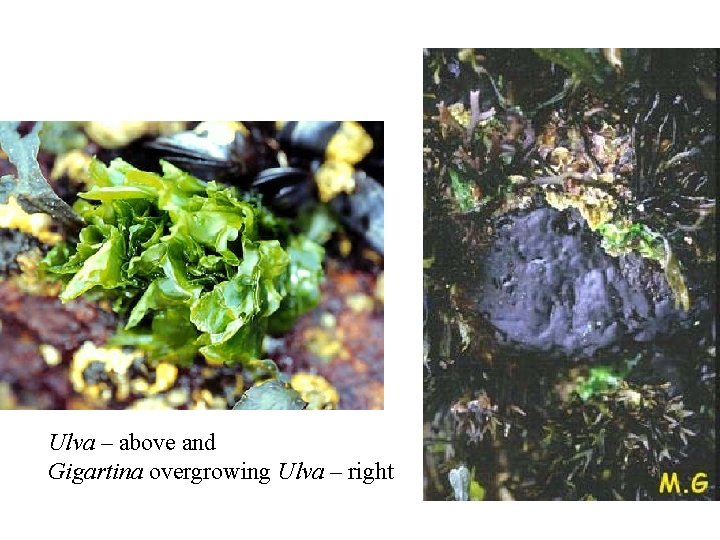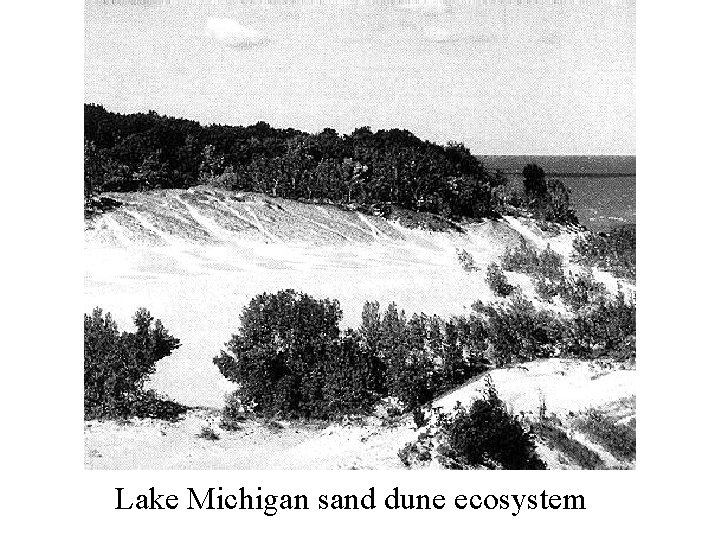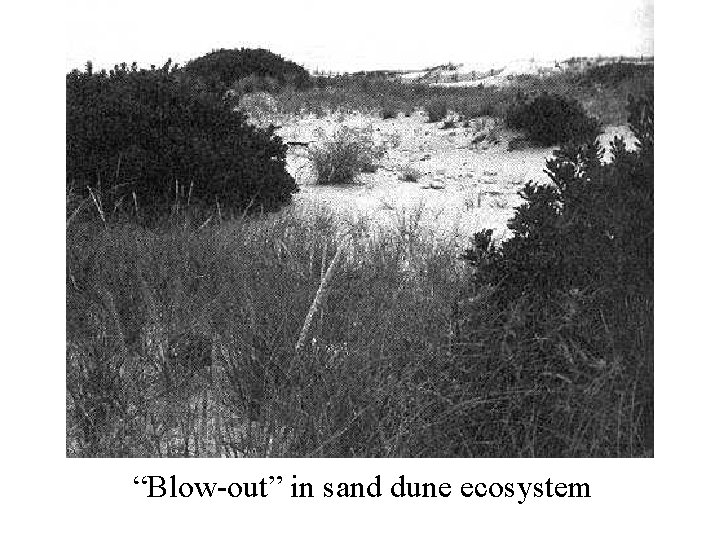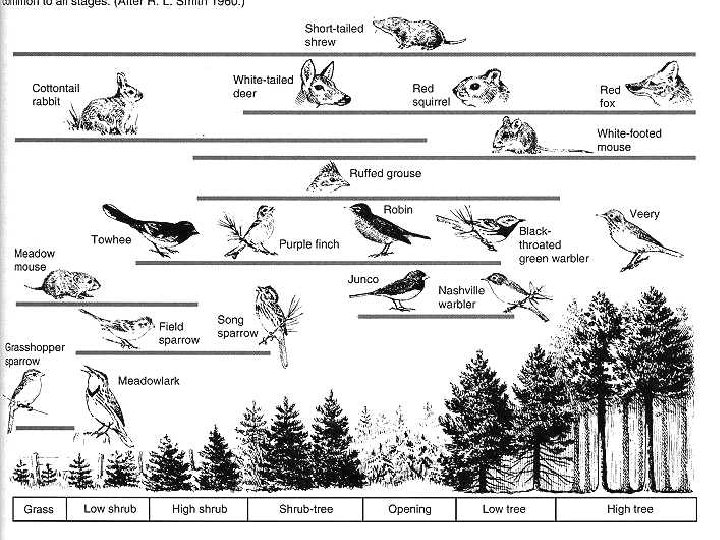Disturbance and Succession Intermediate Disturbance Hypothesis Disturbance maintains

Disturbance and Succession

Intermediate Disturbance Hypothesis • Disturbance maintains communities in a "non -equilibrium state" (never reach equilibrium) and by renewing colonizable space, disturbance allows the persistence of species that might otherwise go extinct due to competitive exclusion. – from Joe Connell


Rocky coast

Intertidal boulder field - California

Waves, boulders and disturbance Wayne Sousa

Species diversity on intertidal boulders with different degrees of disturbance – from Sousa

Species diversity on intertidal boulders with different degrees of disturbance – from Sousa Boulder size Small Medium Large turnover chance 49% / month 9 % /month 0. 1%/ month bare space most medium little diversity low - mostly Ulva high - several low - mostly species Gigartina

Tree fall in Gabon

In an ecosystem, disturbance 1) clears space and interrupts competitive dominance 2) changes relative abundance of species 3) is a source of spatial and temporal variability 4) is an agent of natural selection in terms of life history characteristics

Succession • Succession is the non-seasonal, directional and continuous pattern of colonization and extinction on a site by populations of species - this definition incorporates a range of successional sequences that occur over widely different time scales and have very different mechanisms.

Types of Succssion • Primary - succession on a site that has not experienced life before - extremely severe disturbance may have killed all life so no seeds or roots or individuals survive - lava flow, volcanic explosion, glacial retreat, landslides, weathering of bare rock • Secondary - succession on a site that may have remnants of previous life on it - some survivors of the disturbance fire, floods, windstorms, wave battering, severe grazing • Degradative - succession in which the substrate is decaying and being exploited by various organisms - succession of decomposers on carcass, rotting log, etc.

Body Farm – University of Tennessee FBI Forensics Class


Facilitation Succession • Early species change community or ecosystem in a way that allows later species to move in and changes the system so that the early species can no longer survive there.




Retreat of Muir Glacier

Retreat of Muir Glacier – 1941 – 1950 - 2004

Retreat of Pederson Glacier – Kenai Fjords NP - 1930 -2005

Succession at Glacier Bay

Glacier Bay terminal moraine

Terminal Moraine – Close Up

Early succession – Moss on bare soil

Fireweed at Glacier Bay

Dryas - herbal rose at Glacier Bay

Alder thicket – Glacier Bay

Sitka spruce seedlings

Mature Spruce–Hemlock Forest – Glacier Bay

Tolerance Succession • All species arrive at start of succession, but longer lived individuals eventually outlive short lived species and grow to dominate in the succession - long lived species can tolerate shade and competition early in life.

Old Field Succession

Old field succession – bare ground

Old field succession – annual weeds

Old field succession – perennials

Old field succession – pine invasion

Old field succession – hardwood forest

Inhibition Succession • First species to arrive occupies space and prevents the settlement of later arriving species - the first species are replaced only after they die.

Ulva – above and Gigartina overgrowing Ulva – right

Typical Succession • In most successional sequences, all three mechanisms operate at different times in the sequence.


Lake Michigan sand dune ecosystem

Marram grass establishment

“Blow-out” in sand dune ecosystem


- Slides: 46